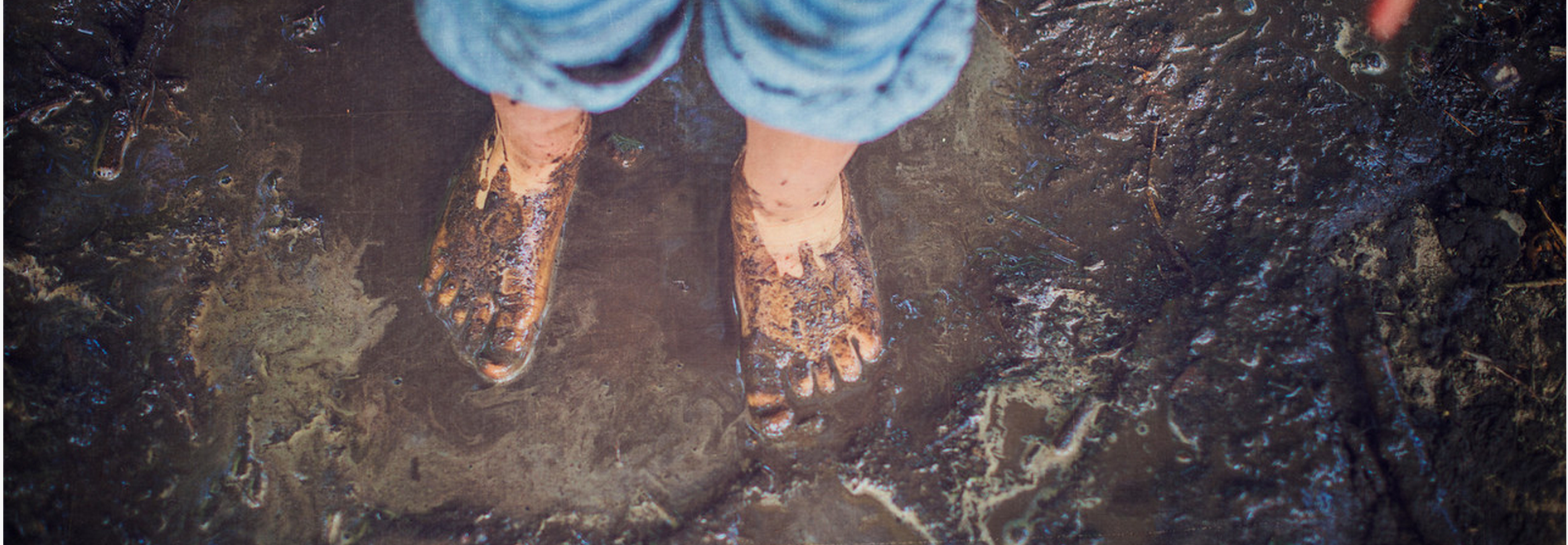Redesigning Nature
-
Age: 0 to 8+
-
Time: 1 hour+
-
Materials: double sided tape
- Skills: Creativity, Behavioral Schema, Sensory, Naturalist
Natural Tree Decoration Activity for Kids
Years ago, well before kids or even marriage, design-minded friends dragged us to a documentary called Rivers and Tides, and we were forever changed by our first introduction to the work of Andy Goldsworthy. For those who don't know of him, Goldsworthy is a Scottish sculptor or "land artist" who installs his work in nature and uses exclusively natural methods and materials. From stone walls that wind to glistening sculptures of fused icicles, Goldsworthy does everything by hand and by nature. To us, his work remains uniquely moving and his process utterly inspiring. His creations makes us stop in our tracks and appreciate the beauty around us in a most profound way.
We didn’t want our daughters to have to wait until their twenties to experience this sort of mind blowing work. And, what better way is there to experience Goldsworthy than to participate in his creative process—or, at least, a kid-friendly approximation? We shared some examples of Goldsworthy's work with our oldest daughter and some friends and their little ones. Then, we applied some double-sided tape to a few tree trunks, removed the backing and welcomed the kids to attach fallen leaves, twigs, berries and other natural treasures. For the kids, feeling for the sticky spots, selecting leaves and pressing to connect them to the tape made for satisfying and developmentally rewarding work. For all of us, young and old, the results were enchanting. And, we've repeated this in spring and summer too, gathering the many things that bloom and grow to redesign nature.
Goldsworthy-inspired works made by any age nature artist also easily transform a corner of the great outdoors into a stage, fort, castle, or fairyland. Give kids the chance to act and think like Goldsworthy, and you teach them that the world can become even more beautiful when our imagination and nature team up.
The Guide
- Derive some inspiration:Share images of Goldsworthy's works in photo books oronline and marvel openly about his materials and methods. If you can, visit an installation of his work. For example, we love a stone wall he built at the Storm King Art Center in Mountainville, NY.
- Pick the right spot:Pick a place that has flat, open and reachable surfaces like smooth-bark trees, rocks, or logs on which to apply tape and, in turn, make art. It should also have leaves, grasses, small twigs or other "stickable" objects of colors and shapes that would stand out on the background.
- Apply the double-sided tape: Outdoor window insulation tape works like a charm. If you have kids under 5, apply the tape in whatever design you like (spiral around the trunk of a tree, create zig-zag designs, make the outline of a creature). If you have older children, collaborate with them on a design, then apply the tape.
- Involve kids of different ages: Older kids (5 and up) could participate in the selection of a site, design of the tape, and the thoughtful placement of leaves and objects into patterns.
- Kids add the color: Pull the paper off of the double-sided tape. Demonstrate how to pick and stick something on it. Keep modeling until kids start to decorate on their own. Kids can grab any materials from nature that are the right shape and size to stick. Encourage older kids (ages 5 and older) to make a plan for what colors, shapes and patterns they may like to use.
- Leave no trace: Unlike Goldsworthy, not all of our materials (i.e. double-sided tape) were natural, so we came back the next day and took all of the tape off the trees.
Why is this activity great for kids?
Giving kids the freedom to arrange and rearrange, adjusting their work as they go, you help them develop creativity and refine their sense of design. Why does design sense matter? In today's world, people are expected to design, create and manipulate ideas, workflows, media, and information constantly. In a blended physical and digital world that is constantly changing, many now argue that a firm grasp of design thinking is one of the most critical tools for success.
We can't think of a better way to appreciate and try to understand an artist than to experiment with his/her craft. In addition to helping kids to see themselves in the role of artist, this activity also helps them see nature as a limitless canvas that comes with unlimited art supplies.
Finally, when kids develop nature-based installations in this way, they practice three behavioral schema: transporting, connecting, and trajectory.



